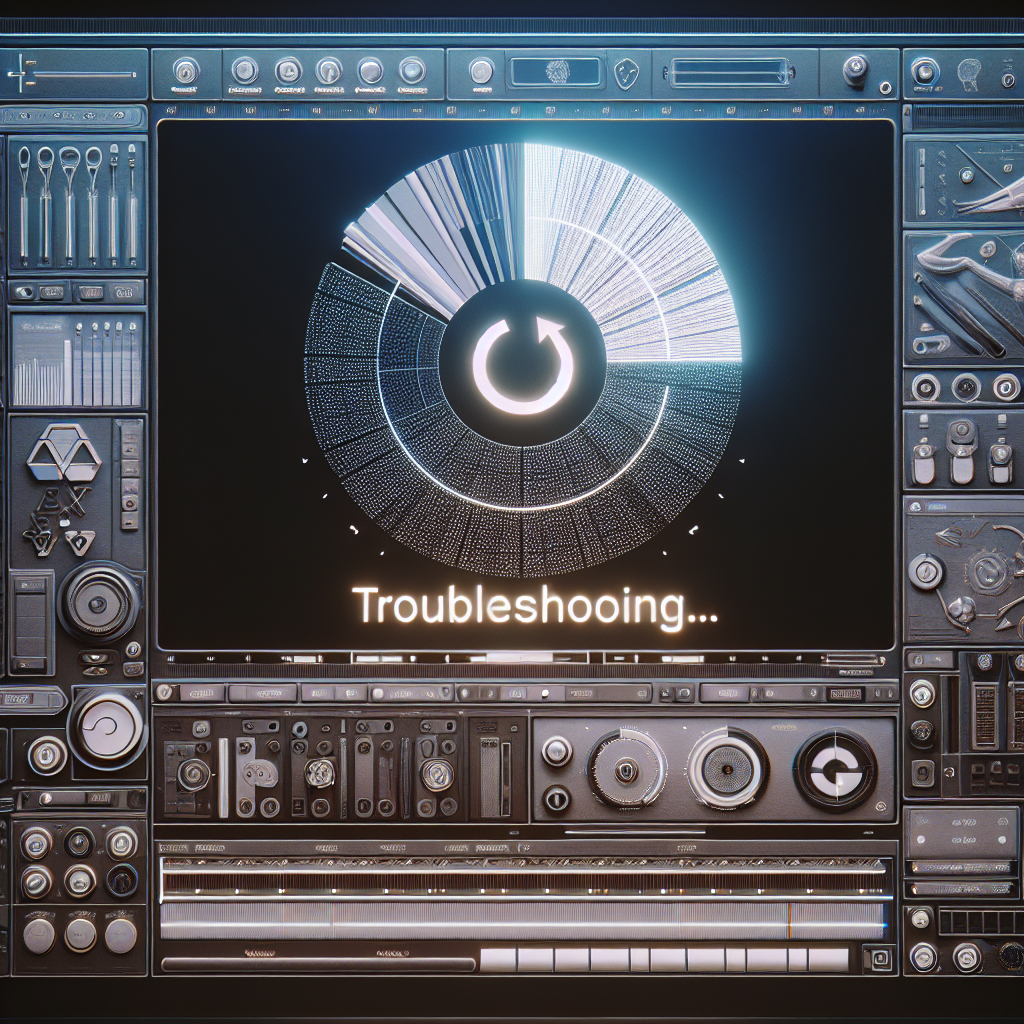Have you ever found yourself frustrated with video editing software issues? You’re not alone! Many people encounter various problems when working with video editing software, but don’t worry – there are steps you can take to troubleshoot these issues and get back to editing seamlessly. From checking for software updates to adjusting your computer’s settings, this article will guide you through the troubleshooting process, ensuring that you can overcome any obstacles that come your way. So, if you’re ready to tackle those pesky video editing software problems head-on, let’s dive in and get started!

Check System Requirements
When troubleshooting video editing software issues, one of the first steps you should take is to check the system requirements. Ensure that your computer meets the minimum specifications set by the software manufacturer. This includes verifying the software’s compatibility with your operating system. Different versions of the software may have different requirements, so it’s important to check the compatibility specifically with your OS.
In addition to checking the operating system compatibility, you should also ensure that your computer has sufficient hardware specifications. Video editing software often requires a powerful processor, a good amount of RAM, and a dedicated graphics card. If your computer falls short in any of these areas, it may struggle to run the software smoothly. Checking the system requirements and comparing them to your computer’s specifications can help identify any potential hardware limitations.
Update Software
Software updates often include bug fixes, performance improvements, and new features. When troubleshooting video editing software issues, it’s crucial to have the latest version installed. Begin by running software update checks within the software itself. Many video editing programs provide an option to check for updates automatically. If available, install any available patches or updates to ensure that you are working with the most stable and optimized version of the software.

Check for Known Issues
Another step in troubleshooting video editing software issues is to investigate whether there are any known issues with the software. Start by visiting the software’s official website. Often, software developers maintain a support or troubleshooting section on their website that provides information about common problems and their solutions. Additionally, you can explore online forums or communities dedicated to the software. These platforms are usually populated by users who have encountered and resolved similar issues. Searching for specific error messages or symptoms can lead you to discussions where others have shared their experiences and potential fixes.
Restart the Software and Computer
When encountering software problems, it’s always a good idea to restart both the software itself and the computer. Sometimes, issues can be temporary or caused by temporary glitches. Close the video editing software completely and then reopen it. If the problem persists, try restarting your computer. Restarting can help refresh the system and clear out any temporary files or processes that may be interfering with the software’s functionality.

Disable or Update Plugins
Video editing software often supports plugins that enhance functionality or provide additional features. If you have installed any third-party plugins, they may be causing conflicts or contributing to the software issues you are experiencing. In such cases, disabling the plugins can help diagnose the problem. Check the software’s settings or preferences to locate the option to disable plugins, and then restart the software to see if the issues persist.
On the other hand, if you have plugins that are outdated, updating them might solve the problem. Plugin developers often release updates to address compatibility issues and improve performance. Visit the websites or official sources of the plugins you have installed and check for any available updates. Updating the plugins to their latest versions can eliminate software conflicts and ensure smooth operation.
Clear Cache and Temporary Files
Over time, video editing software generates a lot of temporary files and caches. These files can accumulate and affect the software’s performance, leading to various issues. To mitigate this, it’s essential to locate and delete these cache and temporary files on your computer. The process to do this varies depending on the video editing software you are using, but it often involves accessing the software’s settings or preferences. Look for options related to cache or temporary files and follow the instructions provided to clear them. Removing these files can help optimize the software’s performance and resolve any issues caused by their buildup.
Check for Adequate Storage Space
Insufficient storage space on your computer can cause video editing software to malfunction or perform poorly. Particularly when working with large media files, having enough available storage is vital. Check your computer’s storage capacity and ensure that there is enough space to support the software and your projects. If you find that space is limited, consider transferring or deleting unnecessary files to free up storage. This can help prevent software crashes, lag, and other issues related to limited disk space.
Verify Media File Formats
Troubleshooting video editing software issues may involve examining the compatibility of your media files. Different video editing programs support different file formats, and attempting to use an unsupported format can lead to problems. Before importing media files into the software, double-check their compatibility. Refer to the software’s documentation or online resources to determine the supported formats. If you encounter unsupported file formats, you may need to convert them to a compatible format using third-party software or tools. By ensuring that all your media files are in compatible formats, you can avoid any disruptions or errors during the editing process.
Reinstall or Repair the Software
If none of the previous steps resolve the issues you’re experiencing with your video editing software, it may be necessary to take more drastic measures. Reinstalling the software can often help address problems caused by corrupted files or incomplete installations. Uninstall the software from your computer and then reinstall it using the original installation files or a reliable source. This process ensures that you’re working with a clean installation, potentially resolving any software-related issues.
In some cases, video editing software may offer a repair feature that allows you to fix specific problems without reinstalling the entire program. Check the software’s documentation or support resources to see if a repair option is available and how to access it. Repairing the software can save time compared to a complete reinstall and may still resolve the issues you’re facing.
Contact Customer Support
If all else fails, and you’re still unable to troubleshoot the issues with your video editing software, it’s time to seek assistance from the software’s customer support team. Refer to the software’s official website or documentation for information on how to contact customer support. This may include options such as email, live chat, or phone support. Make sure to provide detailed information about the problems you’re experiencing, including any error messages, error logs, or steps you have already taken to troubleshoot. The customer support team will work with you to diagnose the problems and provide appropriate solutions to get your video editing software back on track.
Remember, it’s always helpful to remain patient and friendly when seeking support. Customer support teams are dedicated to assisting users and resolving their problems, and a positive attitude can go a long way in fostering a productive troubleshooting process.
